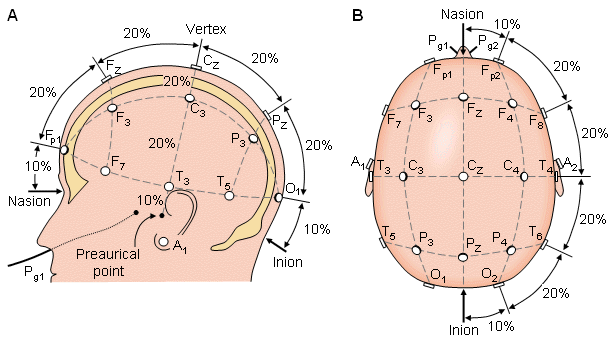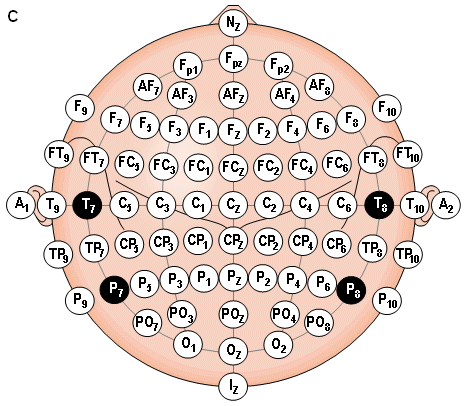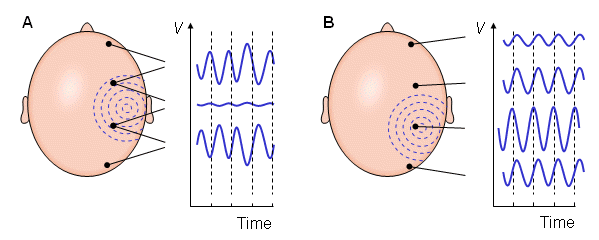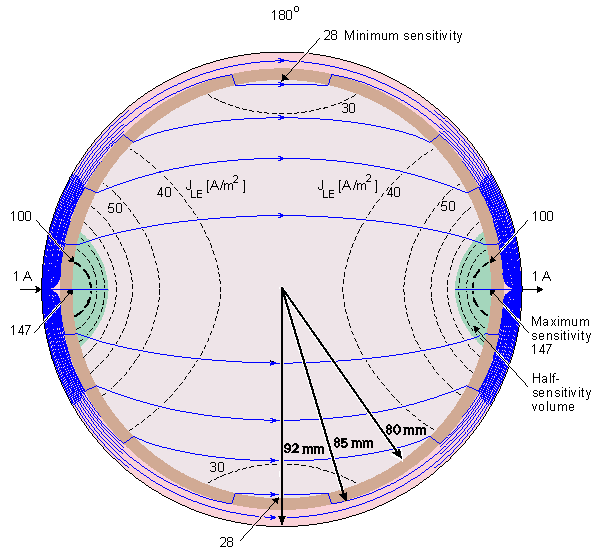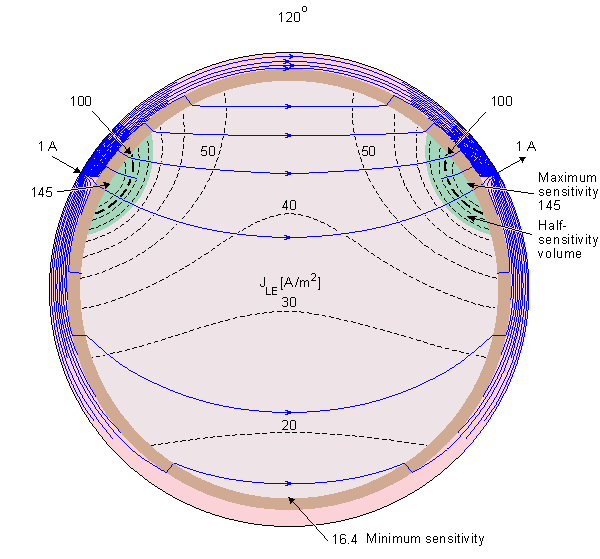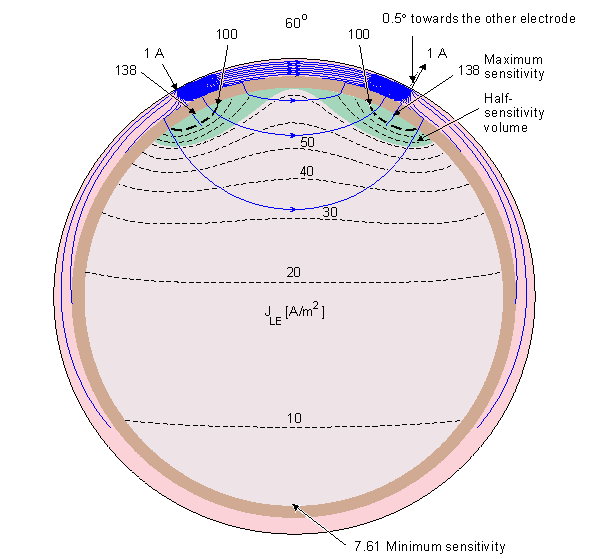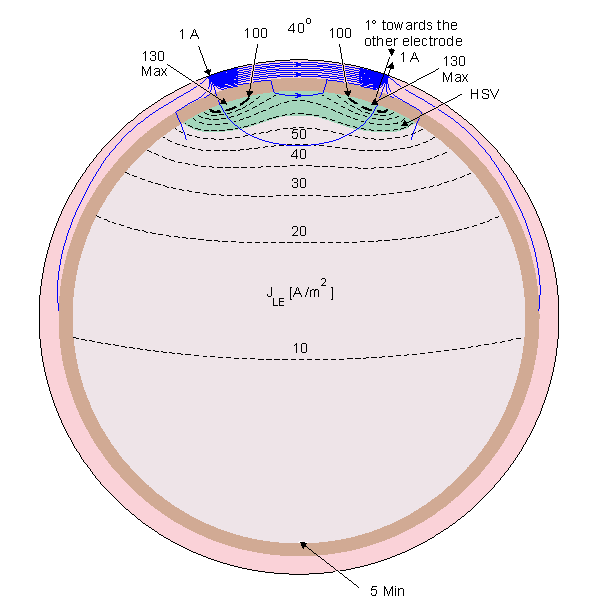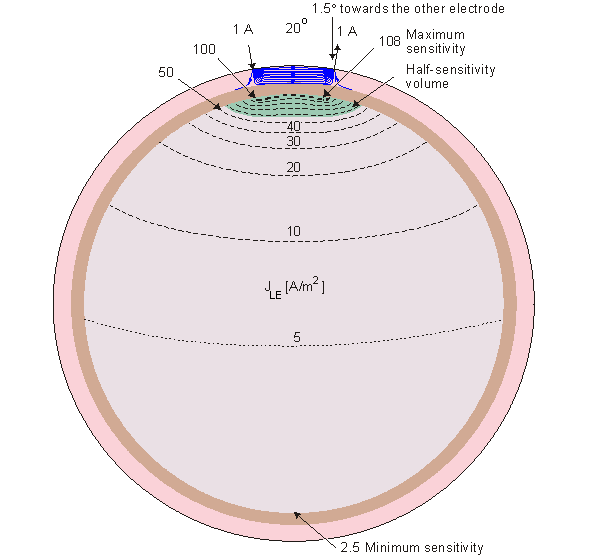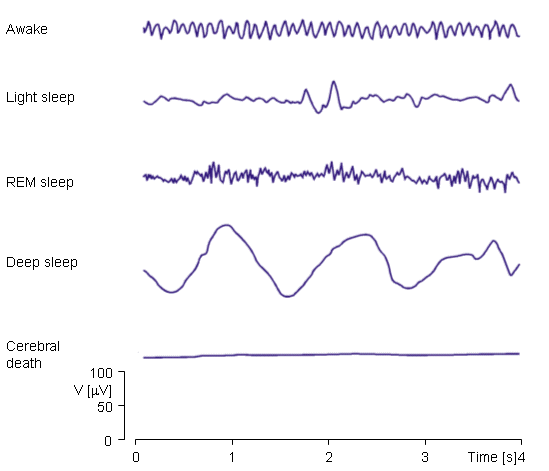 Spontaneous activity is measured on the scalp or on the brain and is called the electroencephalogram. The amplitude of the EEG is about 100 µV when measured on the scalp, and about 1-2 mV when measured on the surface of the brain. The bandwidth of this signal is from under 1 Hz to about 50 Hz, as demonstrated in Figure 13.1. As the phrase "spontaneous activity" implies, this activity goes on continuously in the living individual.
Spontaneous activity is measured on the scalp or on the brain and is called the electroencephalogram. The amplitude of the EEG is about 100 µV when measured on the scalp, and about 1-2 mV when measured on the surface of the brain. The bandwidth of this signal is from under 1 Hz to about 50 Hz, as demonstrated in Figure 13.1. As the phrase "spontaneous activity" implies, this activity goes on continuously in the living individual.
 Evoked potentials are those components of the EEG that arise in response to a stimulus (which may be electric, auditory, visual, etc.) Such signals are usually below the noise level and thus not readily distinguished, and one must use a train of stimuli and signal averaging to improve the signal-to-noise ratio.
Evoked potentials are those components of the EEG that arise in response to a stimulus (which may be electric, auditory, visual, etc.) Such signals are usually below the noise level and thus not readily distinguished, and one must use a train of stimuli and signal averaging to improve the signal-to-noise ratio.
 Single-neuron behavior can be examined through the use of microelectrodes which impale the cells of interest. Through studies of the single cell, one hopes to build models of cell networks that will reflect actual tissue properties.
Single-neuron behavior can be examined through the use of microelectrodes which impale the cells of interest. Through studies of the single cell, one hopes to build models of cell networks that will reflect actual tissue properties.
13.2 THE BRAIN AS A BIOELECTRIC GENERATOR
PRECONDITIONS:SOURCE: Distribution of impressed current source elements
 i (volume source)
i (volume source)CONDUCTOR: Finite, inhomogeneous
The number of nerve cells in the brain has been estimated to be on the order of 1011. Cortical neurons are strongly interconnected. Here the surface of a single neuron may be covered with 1,000-100,000 synapses (Nunez, 1981). The electric behavior of the neuron corresponds to the description of excitable cells introduced in the earlier chapters. The resting voltage is around -70 mV, and the peak of the action potential is positive. The amplitude of the nerve impulse is about 100 mV; it lasts about 1 ms.
 The bioelectric impressed current density
The bioelectric impressed current density  i associated with neuronal activation produces an electric field, which can be measured on the surface of the head or directly on the brain tissue. The electric field was described by Equation 7.10 for a finite inhomogeneous model. This equation is repeated here:
i associated with neuronal activation produces an electric field, which can be measured on the surface of the head or directly on the brain tissue. The electric field was described by Equation 7.10 for a finite inhomogeneous model. This equation is repeated here:






